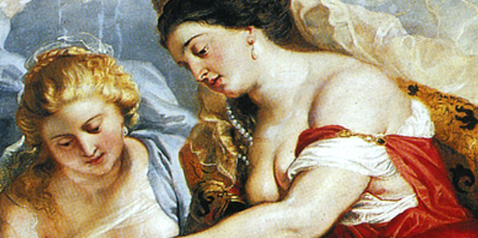
HUMANITY’S NOBLEST SENSE
Peter Paul Rubens
Juno and Argus, um 1610
In his Metamorphoses Ovid relates how Jupiter despatched Mercury, the messenger of the gods, to kill Argus. At the bidding of Juno, Jupiter’s jealous consort, Argus was holding captive Jupiter’s lover Io, who had been turned into a cow. He was guarding her ‘with Argus eyes’, to prevent any further hanky-panky.Rubens shows us in the foreground the lifeless body of the decapitated, hundred-eyed Argus, whose glowing eyes are being removed by Juno in order to decorate the plumage of the peacock, the bird dedicated to her. This bloodthirsty scene from ancient mythology, which Rubens cloaks with an almost solemn atmosphere, is rarely painted. Magnificently he stages the eyes of the peacock, which, as the symbol of vision, are naturally of particular importance to an artist. Like a manifesto of the art of painting, he composes the picture in a magnificent chord of blue, yellow and red, showing the repertoire of the primary colours, while the rainbow that appears in the middle represents the spectrum of light.
Peter Paul Rubens
Siegen 1577 – 1640 Antwerpen
Juno and Argus
c. 1610, oil on canvas, 249 x 296 cm
Acquired in 1894 as a gift from Cologne art-lovers
Inv. no. WRM 1040
Photo: Rheinisches Bildarchiv Köln



